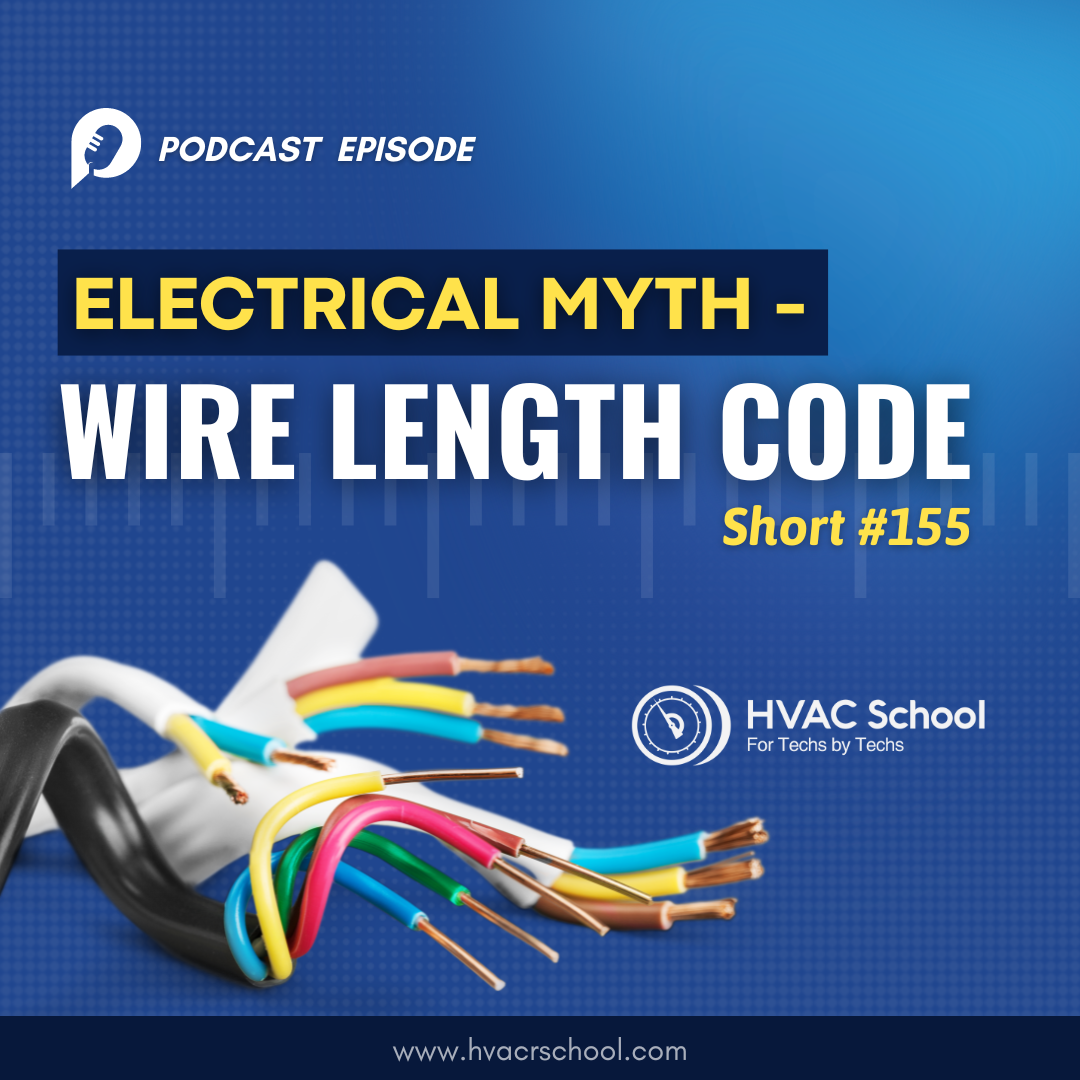Electrical Myth – Wire Length Code – Short #155

In this short podcast, Bryan covers a common electrical myth about wire length and its relationship with the National Electrical Code. The NEC is concerned with safety—protecting buildings and people—but less so with making sure things work.
Wire sizing is a common topic, and length is important because it can contribute to the voltage drop in a circuit. In many cases, we refer to the MCA (minimum circuit ampacity) to select an appropriate wire size.
If you run more current through an undersized conductor, it gets hotter and will experience a voltage drop—though not proportionally. It’s worth noting that nothing in the circuit is fixed; voltage, amperage, and resistance all follow Ohm’s law but are variable as different things start happening in a circuit.
In many cases, the NEC generally doesn’t require us to size conductors to accommodate for voltage drop. Conductors have some degree of resistance, so longer wires will result in a greater voltage drop than you would see in a shorter wire. It makes sense for the wire to overheat, but that won’t happen because the greater resistance in the circuit will reduce the current. There is less work being done.
Longer wires and circuits that are sized correctly shouldn’t overheat or present a safety issue. The NEC recommends but does not require voltage drop to stay below 5% across a conductor. That is a performance recommendation, not a safety concern. We need equipment to perform correctly, but NEC won’t prevent electricians from setting up branch circuits that are longer than the ideal length. Excessively long branch circuits are common in commercial structures, and it’s up to HVAC technicians to notice that and measure the voltage drop to make sure it’s not negatively affecting the equipment.
If you have an iPhone, subscribe to the podcast HERE, and if you have an Android phone, subscribe HERE.
Check out our handy calculators HERE.








Comments
Great clarity to wire sizing.. Thanks Bryan.
Great clarity to wire sizing.. Thanks Bryan.
Irresponsible advice.
In the US, NEC is the Law. Comply with the NOT exceeding 3% or 5% depending which part of the circuit. A simple computation with formula and conductor resistance per 1000ft is given in the NEC. A simple calculation will tell you the length that would be within the 3 or 5% . For longer length, go to the next higher conductor size to ensure that the calculated length is within the required length. Che Kuan Yau (Singapore)
Irresponsible advice.
In the US, NEC is the Law. Comply with the NOT exceeding 3% or 5% depending which part of the circuit. A simple computation with formula and conductor resistance per 1000ft is given in the NEC. A simple calculation will tell you the length that would be within the 3 or 5% . For longer length, go to the next higher conductor size to ensure that the calculated length is within the required length. Che Kuan Yau (Singapore)
To leave a comment, you need to log in.
Log In